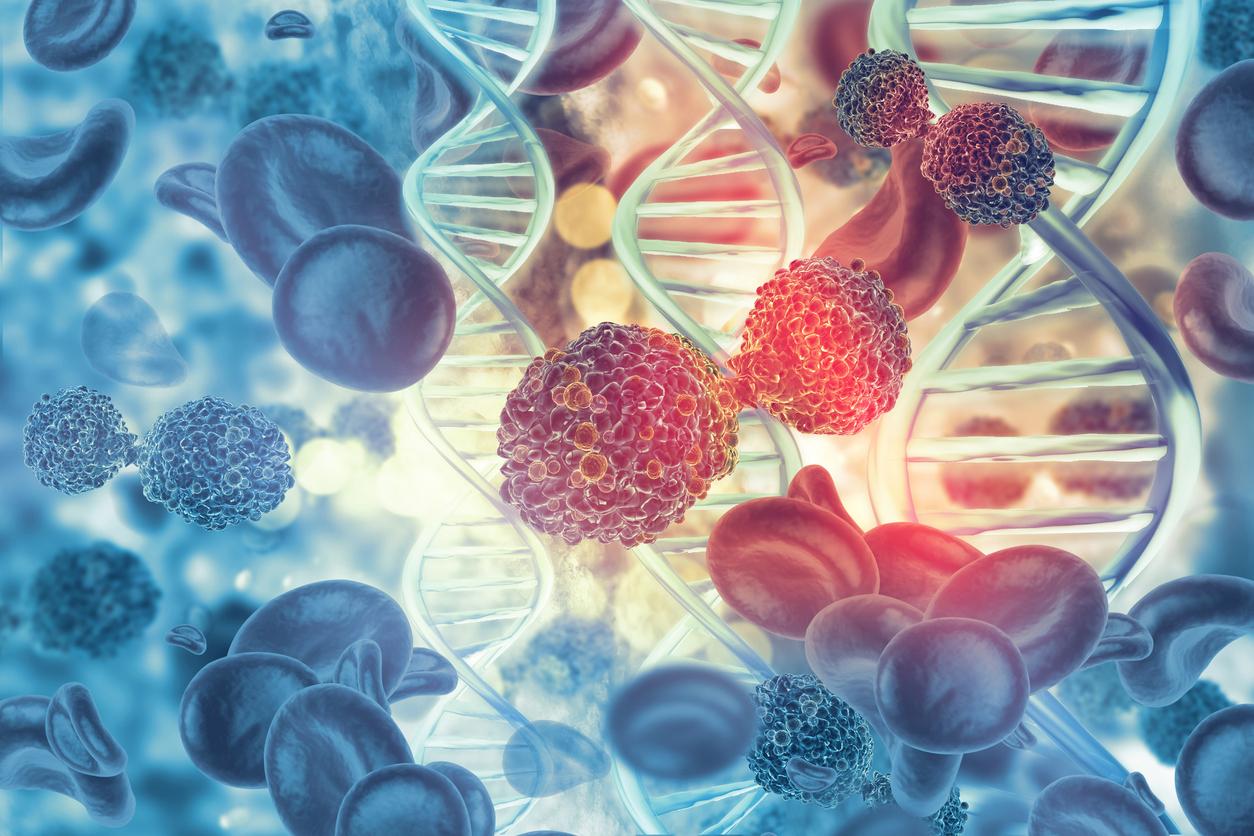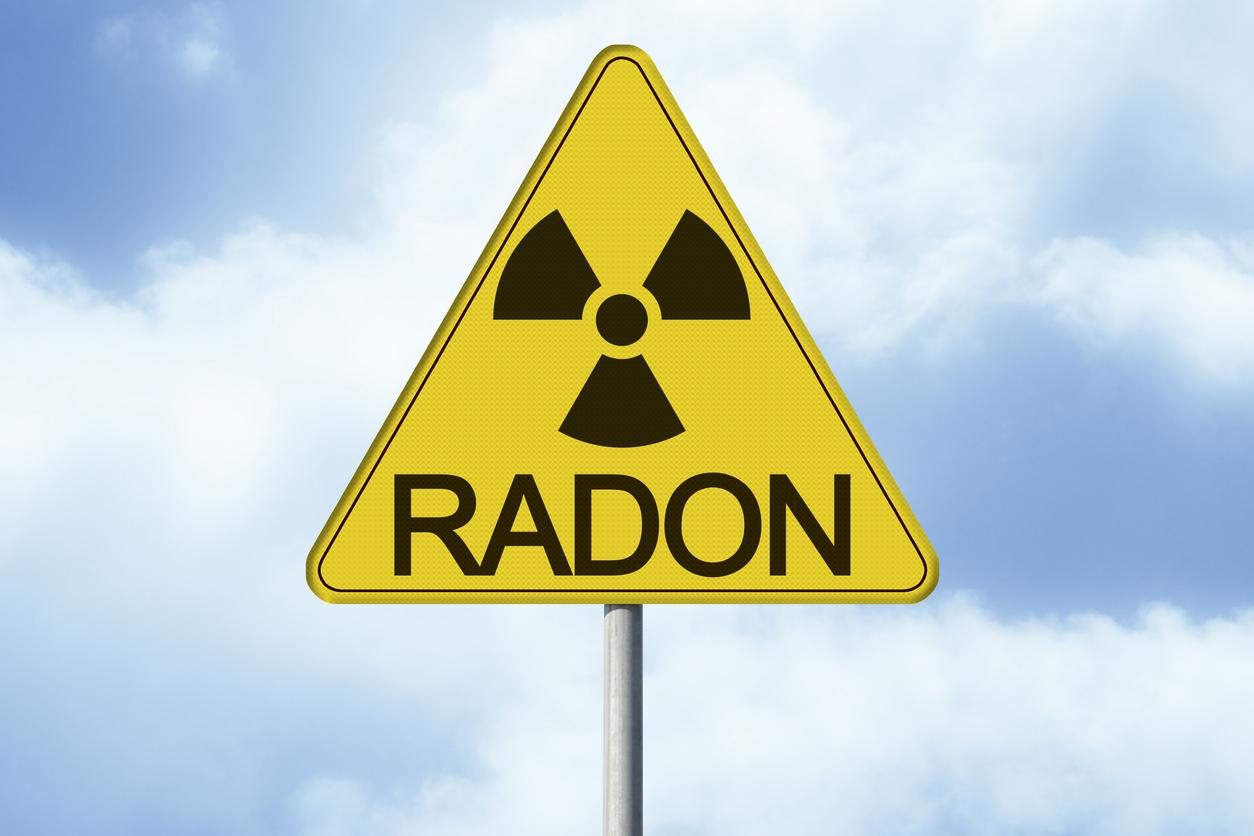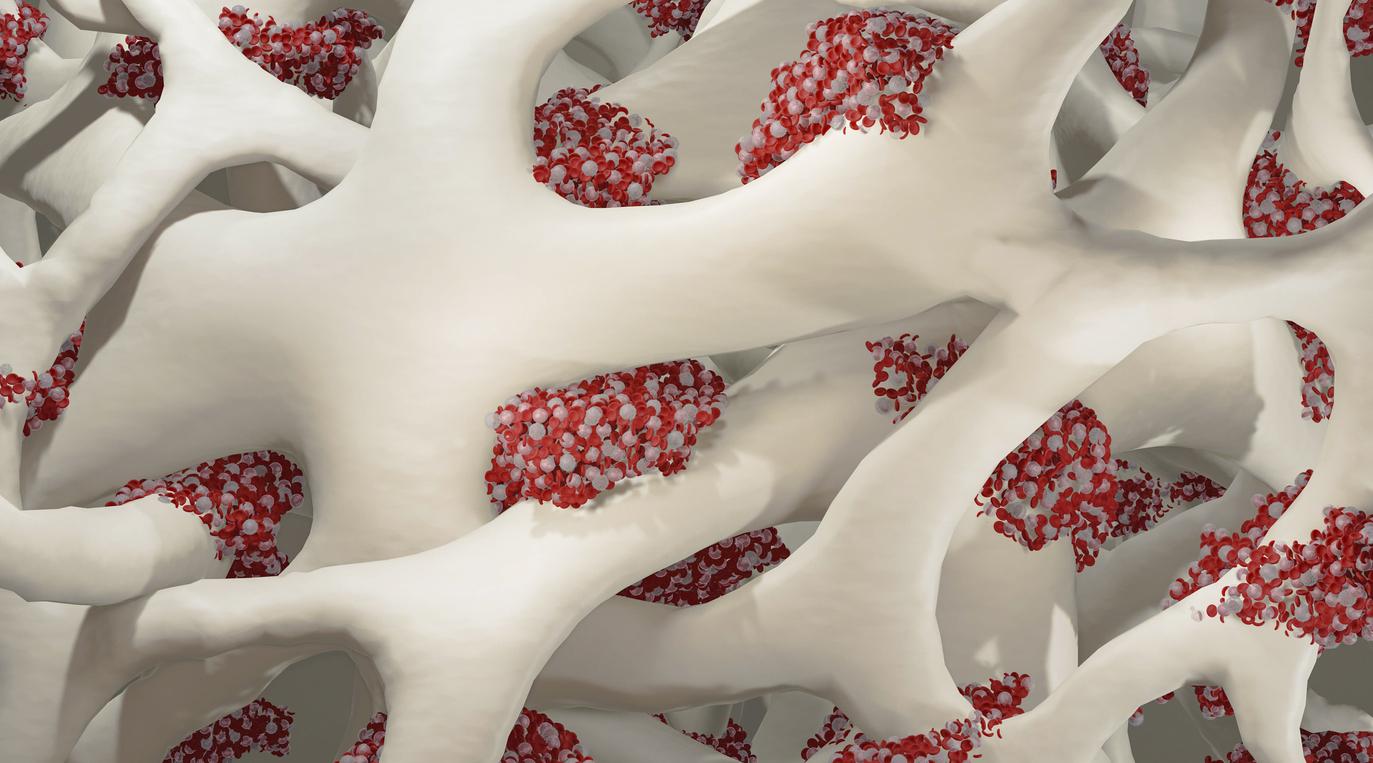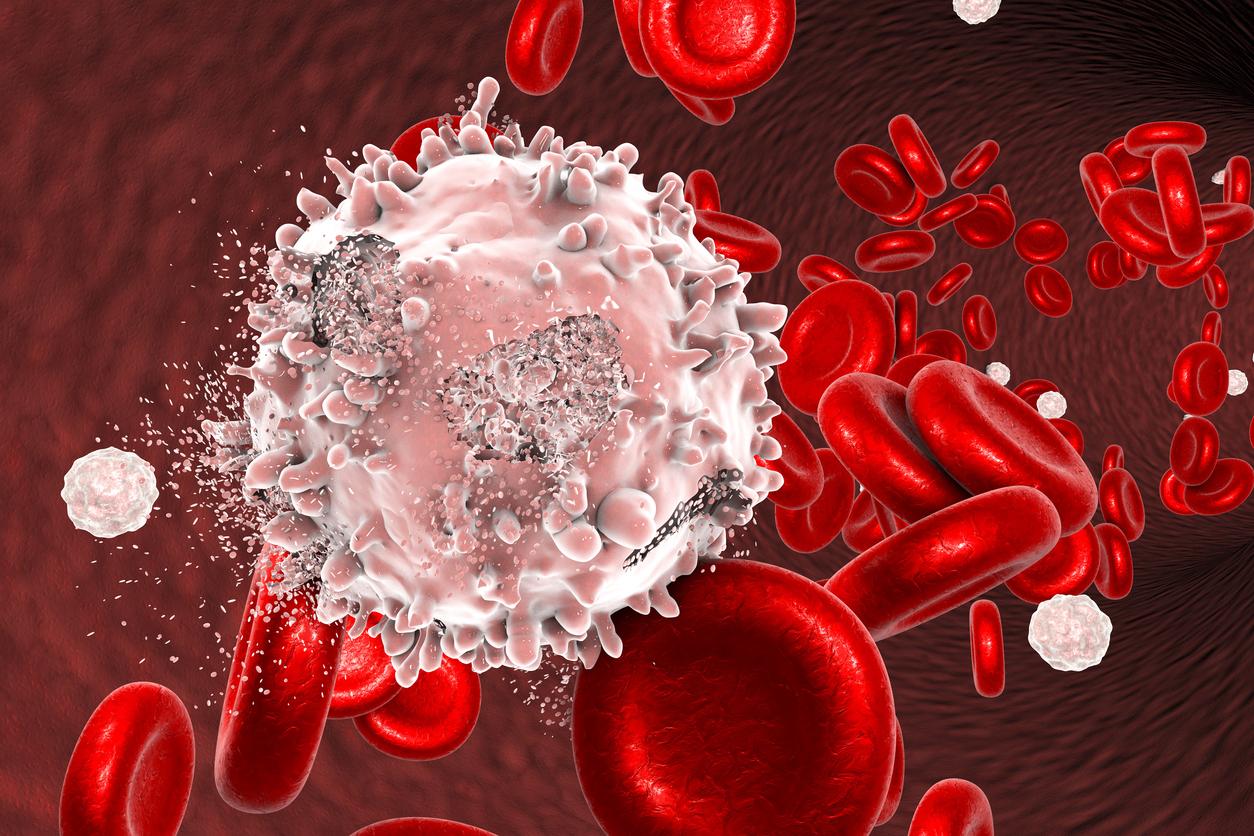In this blood cancer, cancer cells bind to bone cells. Targeting these with treatments would slow the progression of the disease.

- Acute myeloid leukemia is the most common leukemia in adults.
- It is more frequent after 40 years: the average age of diagnosis is 65 years.
- The drug, called epacadostat, is also being tested on other cancers.
Leukemia is a cancer of the blood: tumor cells, called blasts, circulate there. In the case of myeloid leukaemia, these accumulate in the bone marrow, and the production of blood cells is disturbed. This cancer is one of the most difficult to treat, especially since the risk of relapse is very high. In Cancer Discovery, scientists have found a new avenue of treatment: it consists of acting not on the cancerous cells at the origin of the disease, but on their neighbours, the osteoblasts, whose role is to make bone. They would be able to create an environment hostile to cancer cells.
What is the role of osteoblasts?
In their research, researchers at Columbia University explain that osteoblasts help leukemia cells. The latter release a molecule, called kynurenine, which binds to a serotonin receptor (HTR1B) located on osteoblasts. These react by secreting an acute phase response protein (AAS1), which will stimulate the leukemia cells, which will produce more kynurenine. For scientists, this has the effect of a “circle vicious“, which accelerates the progression of the disease.
Break the relationship between these cells
They found that it is possible to suppress this relationship between the two cells, and thus create treatments against the disease. Through experiences carried out on mice, they noticed that the genetic elimination of the serotonin receptor, the one that binds kynurenine to osteoblasts, blocks the progression of leukemia cells. The study authors tested a treatment, based on this experience, on rodents that carried leukemia cells from human patients. Their experimental drug “had a substantial effect in combination with traditional chemotherapy, slowing disease progression”conclude the researchers.
It could be used to treat other blood diseases: in this study, the scientists were particularly interested in myelodysplastic syndrome, another blood cancer that sometimes progresses to acute myeloid leukemia. They found that these patients also had elevated levels of kynurenine and SAA1, suggesting that this new treatment may also work on this type of cancer. “The advantage of this approach is that it does not matter which stem cells cause the diseasesays Stavroula Kousteni, the main author of this study. They all need osteoblasts to grow, and if we can stop these two cell types from communicating, we might be able to stop the disease.”
.

















